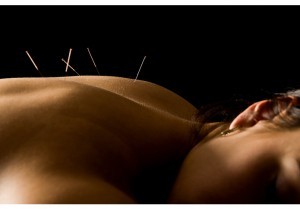Complete the form below and be rejuvenated!
You too can experience the incredible change others are experiencing today Send in your comments and watch us get to work!

Dry needling is a form of therapy in which fine needles are inserted into myofascial trigger points (painful knots in muscles), tendons, ligaments, or near nerves in order to stimulate a healing response in painful musculoskeletal conditions.
Dry needling is not acupuncture or Oriental Medicine; that is, it does not have the purpose of altering the flow of energy (“Qi”) along traditional Chinese meridians for the treatment of diseases. In fact, dry needling is a modern, science-based intervention for the treatment of pain and dysfunction in musculoskeletal conditions such as neck pain, shoulder impingement, tennis elbow, carpal tunnel syndrome, headaches, knee pain, shin splints, plantar fascitis, or low-back pain.
Is Dry Needling Safe?
Drowsiness, tiredness or dizziness occurs after treatment in a small number of patients (1-3%) and if affected, you are advised not to drive. Minor bleeding or brusing occurs after dry needling in 15-20% of treatments and is considered normal. Temporary pain during dry needling occurs in 60-70% of treatments. Existing symptoms can get worse after tx (less than 3% of patients); however, this is not necessarily a “bad” sign. Fainting can occur in certain head or neck regions. Dry needling is very safe; however, serious side effects can occur in less than 1 per 10,000 (less than 0.01%) treatments.
The most common serious side effect from dry needling is pneumothorax (lung collapse due to air inside the chest wall). The symptoms of dry needling-induced pneumothorax commonly do not occur until after the treatment session, sometimes taking several hours to develop. The signs and symptoms of pneumothorax may include shortness of breath on exertion, increased breathing rate, chest pain, a dry cough, bluish discoloration of the skin, or excessive sweating.
If such signs and/or symptoms occur, you should immediately contact your physical therapist or physician. Nerves or blood vessels may be damaged from dry needling which can result in pain, numbness or tingling; however, this is a very rare event and is usually temporary. Damage to internal organs has been reported in the medical literature following needling; however, these are extremely rare events (1 in 200,000).
SINGLE-USE, DISPOSABLE NEEDLES ARE USED IN THIS CLINIC
More Quality Care From Vitality Spine and Sport Physical Therapy
Download and complete our patient forms prior to your visit.